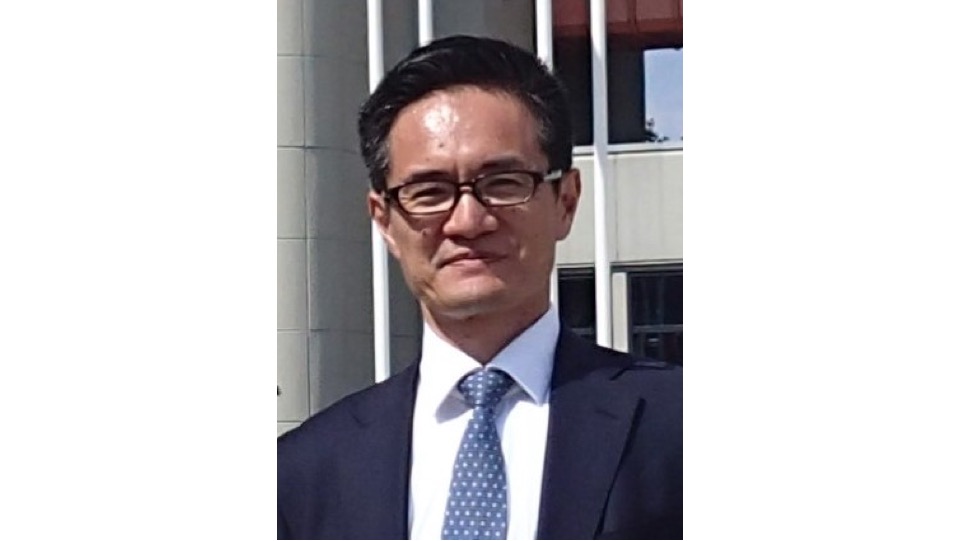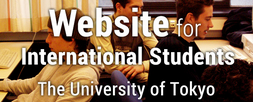
Lab. International Agricultural Development
■Disciplines : Aquatic Environmental Chemistry, Environmental Chemical Engineering
TEL : +81 3 5841 7575
FAX : +81 3 5841 7575
E-mail
2023-Present: Professor, Graduate School of Agricultural and Life Sciences, The University of Tokyo
2019 : Associate Professor, Graduate School of Agricultural and Life Sciences, The University of Tokyo
2014: Project Associate Professor, Ocean Alliance, The University of Tokyo
2012: Project Associate Professor, Graduate School of Frontier Sciences, The University of Tokyo
Project Associate Professor, Atmosphere and Ocean Research Institute, The University of Tokyo
2010: Project Associate Professor, College of Arts and Sciences, The University of Tokyo
2007: Project Lecturer, College of Arts and Sciences, The University of Tokyo
2003: Assistant Professor, Graduate School of Engineering, The University of Tokyo
2002: Postdoctoral Fellow, Graduate School of Engineering, The University of Tokyo
2002: Ph.D., Graduate School of Engineering, The University of Tokyo
1997: B.S., Faculty of Engineering, The University of Tokyo
The major goal of my research is to contribute to the development of environmental technologies and ecosystem conservation through interdisciplinary and issue-oriented approaches. I have been conducting two studies mainly for developing marine environmental technologies and conserving coastal ecosystems focused on the linkage between forest, river and sea to achieve the purpose. At first, a seaweed bed restoration method using iron fertilizer has been developed. The lack of iron in coastal area was focused as a factor for depleting seaweed beds, so-called “barren ground.” The effectiveness of this method was confirmed as results of fundamental studies and a field test in Hokkaido. Meanwhile, I have evaluated material dynamics, such as iron, nitrogen and phosphorus, in the coastal areas and river basins for understanding the forest-river-sea linkage. I have focused on the influence of land use on estuarine environments in recent years.
In addition, I have engaged in environmental education and interdisciplinary education in ocean related fields for developing human resources. I have been in charge of domestic and overseas internship programs in recent years. Graduate students are sent to the international organizations in the overseas internship program. I evaluated educational effects of domestic and overseas internships on establishment of students’ career paths.
-
Influence of rice paddy fields on iron dynamics in rivers and structural features of humic acids in their sediments of the northwest of Hokkaido, Japan
-
Potential influence of oceanic environmental change on seaweed bed distribution in Tsushima Islands
-
Influence of freshwater from terrestrial sources on iron concentrations in Kesennuma Bay, Japan
-
Dynamics of iron in the Chikugo River Basin
-
Changes in the coastal environment in Kamaishi Bay after the Great East Japan Earthquake
-
Educational effect of internship for human resource development
- H. Iwai and M. Yamamoto, “Influence of land use on the structural feature of sedimentary humic acids in rivers in northwest Hokkaido, Japan,” Anal. Sci., 35(6) (2019) (in press).
- A. Aneksampant, A. Tanaka, X. Tu, H. Iwai, M., K. Nakashima and M. Fukushima, “Roles of microbial activity and anthraquinone-2,7-disulfonate as a model of humic substances in leaching of iron from hematite into seawater,” Analytical Sciences, 34(11) (2018) 1303-1308.
- M. Yamamoto, H. Nomura and S. Kimura, “Effectiveness of Overseas Internship for Developing International Marine Human Resources,” Journal of Japan Society of Ocean Policy, 7 (2017) 145-157 (peer-reviewed report, in Japanese).
- M. Yamamoto, T. Kato, S. Kanayama, K. Nakase and N. Tsutsumi, “Effectiveness of Iron Fertilization for Seaweed Bed Restoration in Coastal Area,” Journal of Water & Environment Technology, 15(5) (2017) 186-197.
- M. Yamamoto, D. Liu, A. Kasai, K. Okubo and M. Tanaka, “Dynamics of iron in the Chikugo River Basin: Comparison of iron with nitrogen and phosphate input to the estuary,” Regional Studies in Marine Science, 8 (2016) 89-98.
- M. Yamamoto and S. Kimura, “The educational effect of an internship program established for new ocean-related career paths,” Journal of Japan Society of Ocean Policy, 6 (2016) 117-129 (in Japanese).
- M. Yamamoto, T. Kato, S. Tabeta, D. Kitazawa, M. Fujino, K. Shozugawa, M. Matsuo, K. Tanaka and Y. Michda, “Changes in the coastal environment in Kamaishi Bay after the Great East Japan Earthquake,” Nippon Suisan Gakkaishi, 81(2) (2015) 243-255 (in Japanese).
- M. Yamamoto and M. Fukushima, “Humification index of composts originating from three types of woody biomass,” J. Mater. Cycles Waste Manage, 16(4) (2014) 731-738.
- M. Yamamoto, M. Fukushima, E. Kiso, T. Kato, M. Shibuya, S. Horiya, A. Nishida, K. Otsuka and T. Komai, “Application of Iron Humates to Barren Ground in a Coastal Area for Restoring Seaweed Beds,” J. Chem. Eng. Jpn, 43(7) (2010) 627-634.
- M. Yamamoto, A. Nishida, K. Otsuka, T. Komai and M. Fukushima, “Evaluation of the binding of iron(II) to humic substances derived from a compost sample by a colorimetric method using ferrozine,” Bioresour Technol, 101(12) (2010) 4456-4460.





